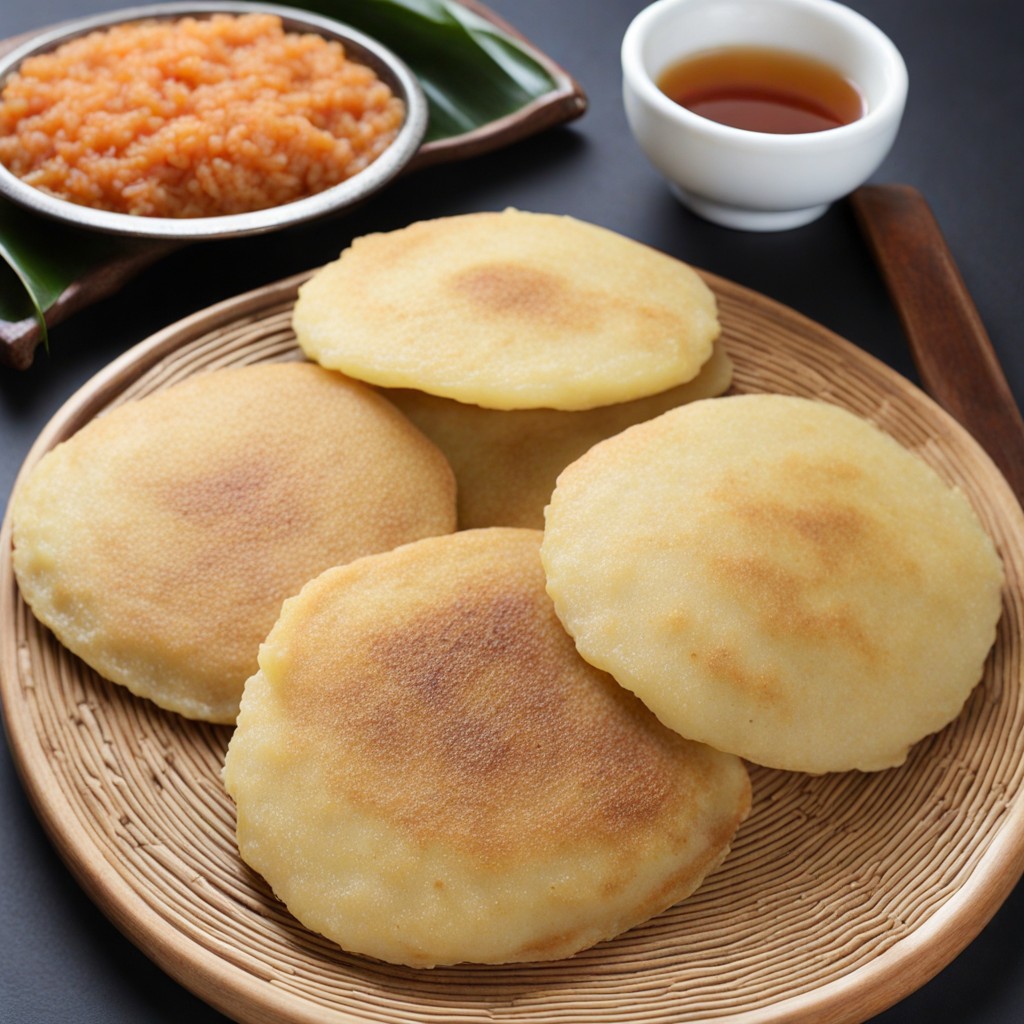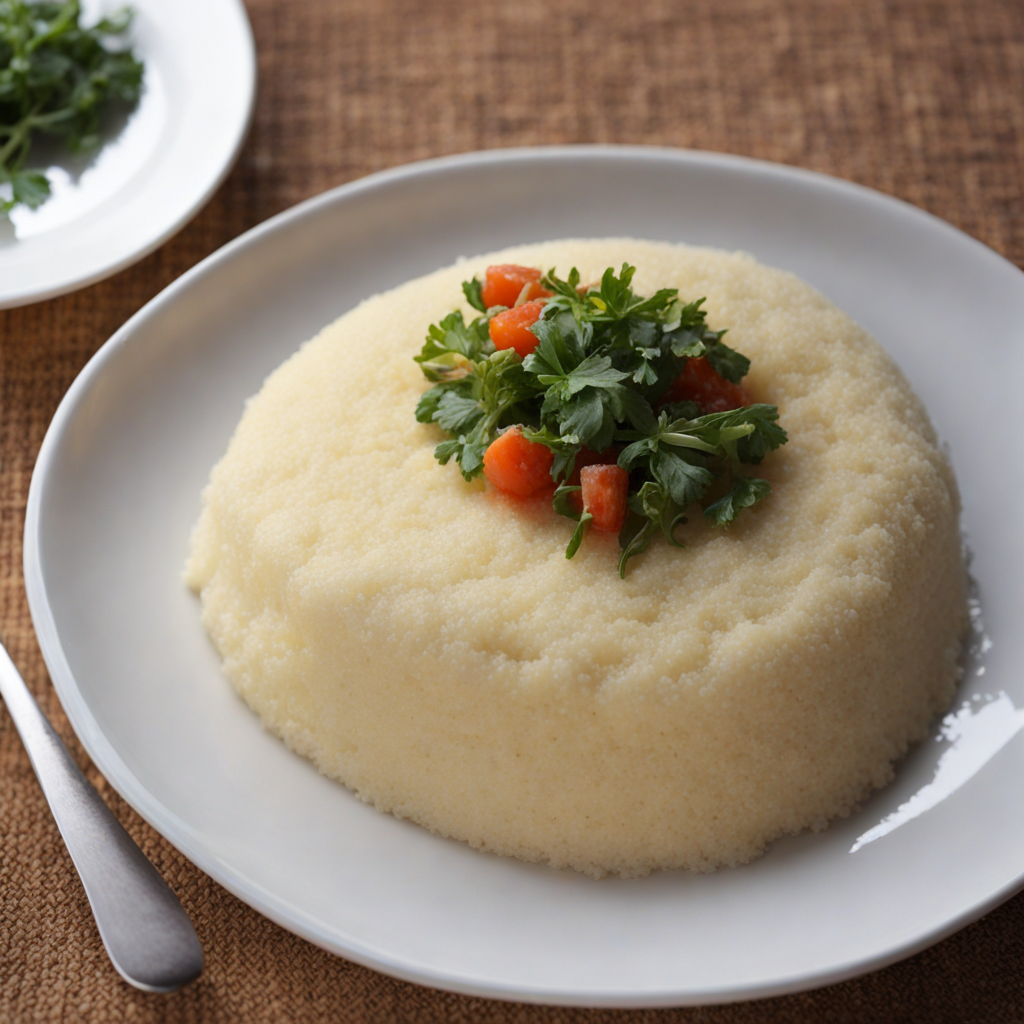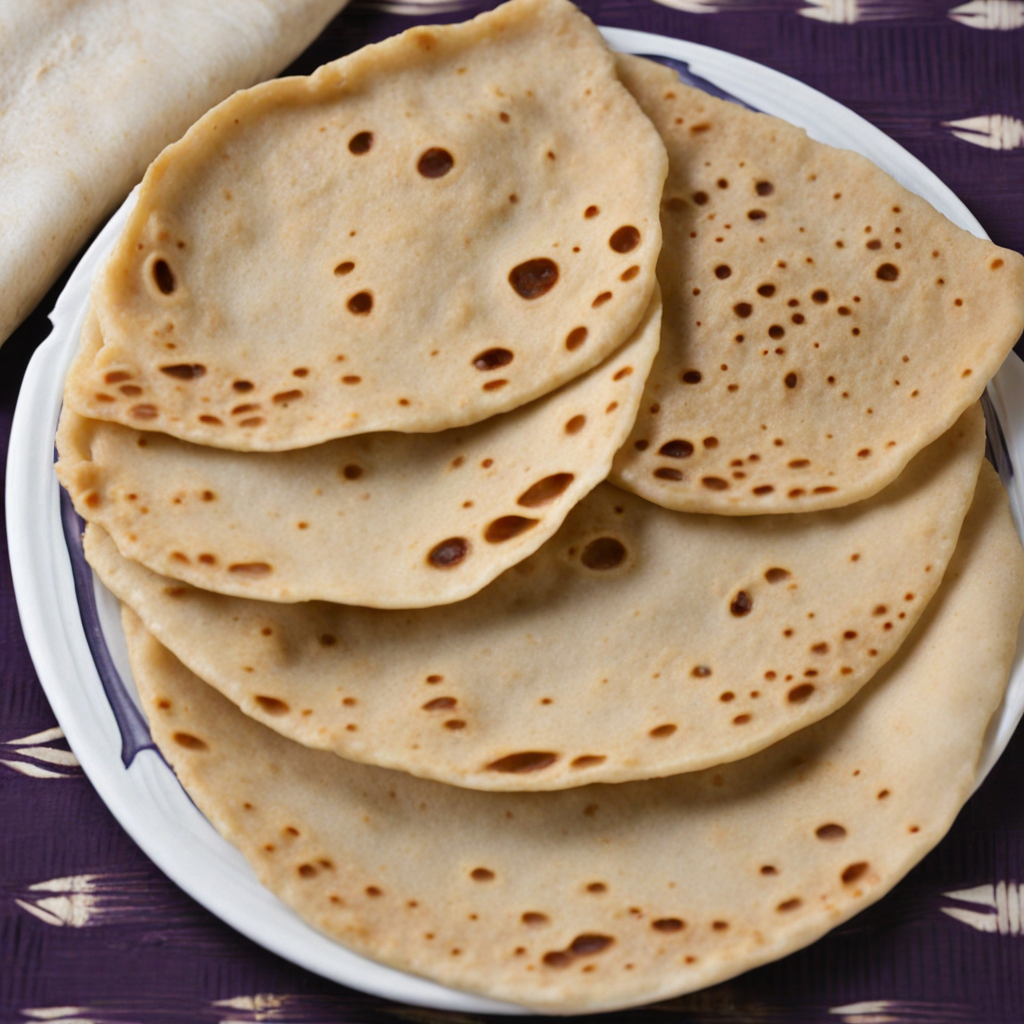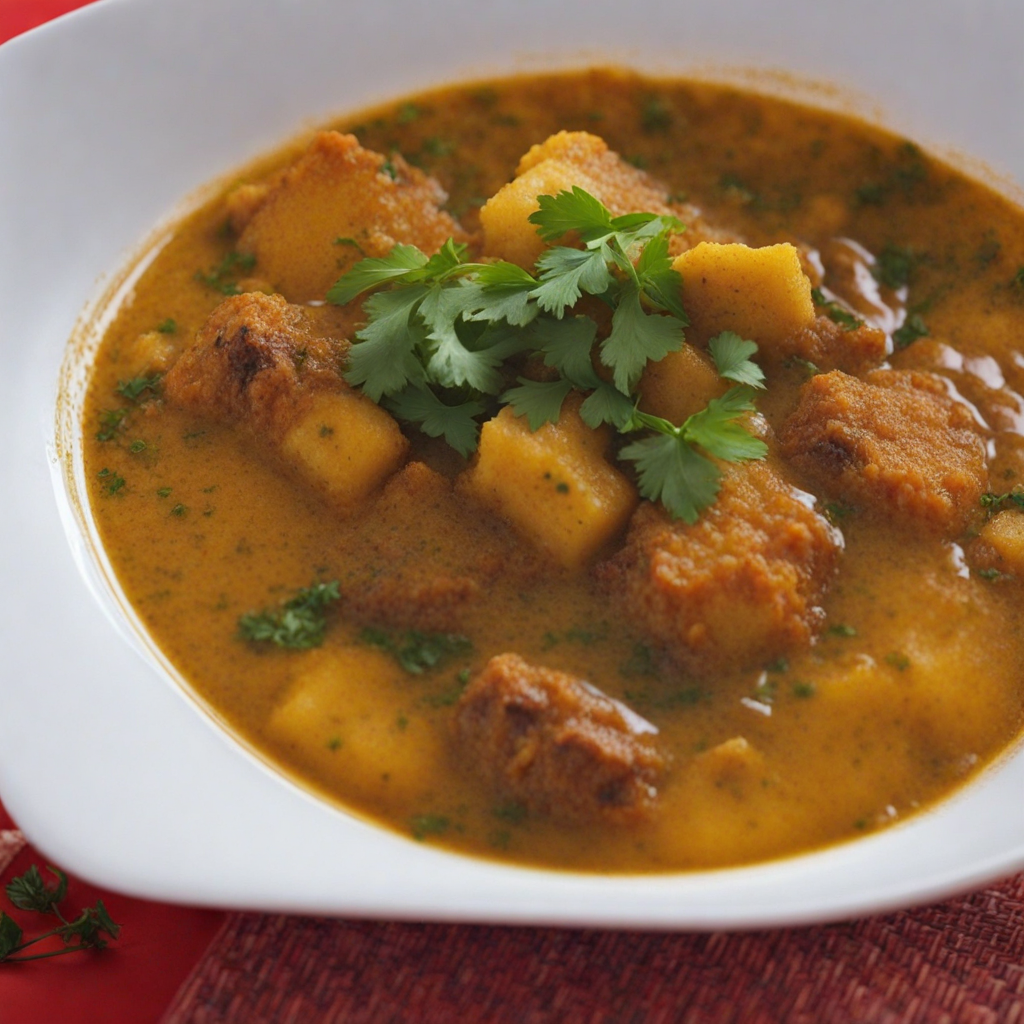Vitumbua
Vitumbua is a delightful Tanzanian treat that brings together the comforting flavors of rice and coconut in a uniquely satisfying way. These little rice cakes are made primarily from a mixture of rice flour, grated coconut, and sugar, creating a subtly sweet base that is both aromatic and inviting. The dough is often flavored with a hint of cardamom, adding a warm, spicy note that perfectly complements the natural sweetness of the coconut. The texture is slightly chewy on the inside while maintaining a golden, crisp exterior, making each bite an exciting contrast of sensations. Traditionally, Vitumbua is cooked in a special pan called a "vitumbua pan," which allows the cakes to develop a beautifully browned surface. This cooking method not only enhances the flavor but also contributes to the unique shape and texture of the treats. Enjoyed warm, they are often served as a snack or breakfast item, pairing wonderfully with tea or coffee. The aroma that wafts through the air as they cook is tantalizing, beckoning anyone nearby to indulge in these local delicacies. What makes Vitumbua truly special is its versatility; while the classic version is delightful on its own, variations abound. Some cooks might add raisins or nuts for added texture and flavor, while others might serve them with honey or jam for a sweeter experience. Each bite of Vitumbua encapsulates the essence of Tanzanian culinary culture, showcasing the importance of community and tradition in food preparation. Discovering Vitumbua is not just about tasting a new dish, but also about experiencing the heart and soul of Tanzanian hospitality.
How It Became This Dish
Vitumbua: The Cultural and Culinary Heritage of Tanzania Vitumbua, a delightful Tanzanian snack, has captured the hearts and palates of many both in and beyond its homeland. This traditional dish, consisting of rice flour and coconut milk, is often shaped into small cakes and deep-fried to a golden perfection. The history of vitumbua is deeply intertwined with the rich cultural tapestry of Tanzania, reflecting the influences of various communities and the evolution of culinary practices over time. Origins of Vitumbua The origins of vitumbua can be traced back to the coastal regions of East Africa, particularly along the shores of the Indian Ocean where Tanzania is situated. The dish is thought to have been influenced by the Swahili culture, which is a synthesis of African, Arab, and Indian traditions. The Swahili coast was a significant hub for trade and cultural exchange, which introduced new ingredients and cooking techniques into the local cuisine. Rice, a staple food in many East African countries, was brought to the region through trade routes linking the Middle East and Asia. The incorporation of rice flour into the local diet marked a significant shift in culinary practices, allowing for the creation of various dishes, including vitumbua. Coconut, another essential ingredient in vitumbua, is abundant in coastal areas of Tanzania and has been used in cooking for centuries. The use of coconut milk adds richness and flavor to the dish, showcasing the natural resources available in the region. Cultural Significance Vitumbua is more than just a snack; it embodies the communal aspects of Tanzanian culture. Traditionally, these rice cakes are prepared during special occasions, celebrations, and gatherings, serving as a symbol of hospitality and togetherness. Families often come together to prepare vitumbua, turning the cooking process into a communal activity that fosters bonds and reinforces traditions. In Tanzanian society, food plays a crucial role in social interactions. Sharing a meal is a way to express love, friendship, and respect. Vitumbua, with its crispy exterior and soft interior, is often served during family gatherings, weddings, and religious celebrations. It is not unusual to find vitumbua being sold by street vendors or served at local markets, making it accessible to everyone and further embedding it into the daily lives of Tanzanians. The dish's popularity has transcended regional boundaries, as it is enjoyed in various forms across different communities. Each region may have its unique twist on vitumbua, incorporating local spices or ingredients that reflect their culinary preferences. This adaptability has allowed vitumbua to remain relevant and cherished in Tanzanian cuisine. Development Over Time As Tanzanian society has evolved, so too has the perception and preparation of vitumbua. The advent of globalization and modernization has introduced new cooking methods and ingredients, influencing the way traditional dishes like vitumbua are made. While the core recipe has remained largely unchanged, there are now variations that cater to contemporary tastes. In urban areas, for example, you may find vitumbua being served in upscale restaurants, often with innovative twists such as the addition of spices like cardamom or cinnamon, or fillings like sweetened banana or chocolate. This shift reflects a broader trend in which traditional foods are being reimagined to appeal to younger generations and international audiences. The rise of social media has also played a significant role in the popularization of vitumbua. Food bloggers and influencers have showcased the dish, introducing it to a global audience and encouraging people to try making it at home. This exposure has not only elevated the status of vitumbua but has also sparked interest in other Tanzanian dishes, contributing to a revival of interest in indigenous culinary practices. Moreover, vitumbua is often associated with the concept of "street food," a genre that has gained immense popularity worldwide. This association has led to an increase in food festivals and markets where local vendors showcase their culinary skills, offering authentic vitumbua alongside other traditional dishes. Such events celebrate Tanzanian culture and provide a platform for local chefs to gain recognition and appreciation for their culinary heritage. Vitumbua in Today’s World In today’s globalized world, vitumbua continues to be a beloved snack, not just in Tanzania but in various parts of East Africa and among Tanzanian diaspora communities worldwide. It is often featured in potlucks, cultural festivals, and community events, serving as a bridge between generations and cultures. For many Tanzanians living abroad, vitumbua evokes nostalgia, reminding them of home and the communal experiences shared around food. The dish's simplicity and adaptability make it a favorite among food enthusiasts looking to explore traditional African cuisine. Home cooks around the world have embraced vitumbua, experimenting with various fillings and toppings, thus ensuring that the dish evolves while still honoring its roots. Innovative chefs in Tanzania are also working to elevate vitumbua, incorporating it into modern tasting menus and culinary experiences that highlight the richness of Tanzanian flavors. Conclusion Vitumbua is more than just a delicious snack; it is a testament to the resilience and adaptability of Tanzanian culture. From its origins along the Swahili coast to its current status as a beloved dish enjoyed by many, vitumbua reflects the rich history of trade, cultural exchange, and community bonding. As it continues to evolve and find its place in both traditional and modern culinary landscapes, vitumbua stands as a symbol of Tanzania's vibrant heritage, inviting people from all walks of life to savor its unique flavors and the stories woven into every bite.
You may like
Discover local flavors from Tanzania







